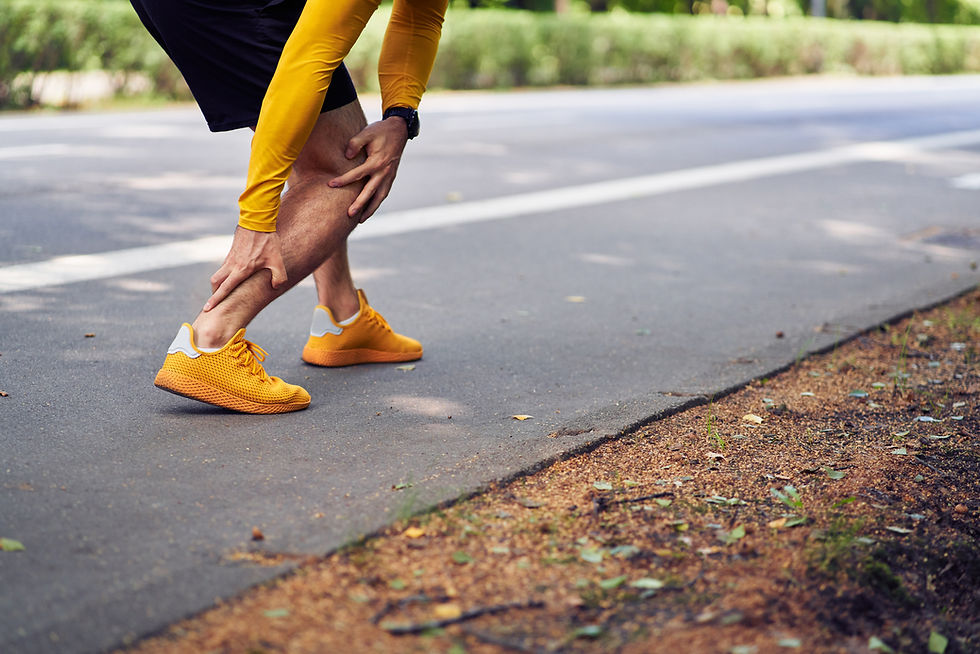What we really know about ACL prevention???
- Kevin Ryan, MPT
- Mar 2, 2018
- 4 min read

ACL injuries are among the most common injuries in sports. They affect everyone from the young high school soccer players to the strong, agile professional football players. As New Englanders, we have seen some of our favorite athletes including Tom Brady, Wes Welker, Julian Edelman, and Rob Gronkowski suffer this unfortunate fate. The ACL injury is also one of the most researched injuries in sports medicine. We have learned a lot about the biomechanics of how the non-contact ACL injury, as well as how the contact ACL injury occurs. We have found that the noncontact ACL is occurring more frequently than the noncontact injury.4 Intrinsic risk factors for ACL injury include higher body mass index, subtalar joint overpronation, generalized ligamentous laxity, and decreased neuromuscular control of knee motion.1 We know that poor quad to hamstring strength ratios, genu valgus landing patterns, core instability and decreased balance are increased risk factors. We have designed, redesigned and improved ACL prevention strategies for years. The athlete’s biomechanical movement patterns are a key modifiable risk factor for injury. Injury prevention programs have been built to target movement patterns by incorporating strength, plyometrics, and sports-specific agility training.3 Well-designed injury prevention programs have the lowest injury rates and injury time loss. 4 When these programs are implemented we know that the reduction for ACL and knee injuries in general decreases.4-8 We have, also, found that the timing of programs can improve outcomes. ACL prevention programs may be more effective if administered early in an athlete's career, as younger athletes may be more likely to adapt new biomechanical movement patterns.2
Despite all this knowledge and insight, the ACL injuries are still occurring at an astronomical rate. The number of anterior cruciate ligament (ACL) injuries reported in athletes younger than 18 years has increased over the past 2 decades.1 The most glaring risk that we are not regularly addressing is that the effects of a well-designed injury prevention program is strongly influenced by how frequently athletes perform the training. 3 Let me summarize that, Frequency and consistency are the most common factors that derail a well-intended, well-constructed ACL prevention program.
Coach and athlete education on cutting/landing techniques that avoid high-risk knee positions are fundamental to long-term ACL prevention. Injury prevention programs are straightforward to implement because they require little to no equipment, but need to be performed as part of regular team training or physical education 2–3 times per week.3
As stated in the most recent IOC consensus statement, consistent implementation and utilization, and adherence across all levels of competitive play, is one of the biggest challenges facing the clinician (and athlete). Those involved in youth sports, and clinicians who treat paediatric athletes with ACL injury have a responsibility to actively advocate for injury prevention in both a primary setting and for children who return to sport after an injury.3
What we really know about ACL prevention is that the science is moving in the right direction, but full adoption of the programs across the gamut of athletes, coaches, trainers, parents and healthcare professionals is slow to adopt this. It means that we need to change the way we warm-up, alter some practice time, and/or address biomechanical faults that may not be easy to correct. I hope that we can build awareness of how effective these programs can be and that consistently implementing them into everyday training can reduce the ACL injury rate.
For more on ACL injury prevention check us out at Five Star Sports Rehab and Physical Therapy in Acton, on facebook, or on Instagram.
LaBella CR, Hennrikus W, Hewett TE; Council on Sports Medicine and Fitness, and Section on Orthopaedics. Anterior cruciate ligament injuries: diagnosis, treatment, and prevention. Pediatrics. 2014 May;133(5):e1437-50. doi: 10.1542/peds.2014-0623.
Thompson-Kolesar JA1,2, Gatewood CT2, Tran AA2,3, Silder A1, Shultz R2, Delp SL1,2,4, Dragoo JL2. Age Influences Biomechanical Changes After Participation in an Anterior Cruciate Ligament Injury Prevention Program. Am J Sports Med. 2017 Dec 1:363546517744313. doi: 10.1177/0363546517744313
Ardern CL1,2, Ekås GR3,4,5, Grindem H6, Moksnes H4, Anderson AF7, Chotel F8, Cohen M9, Forssblad M10, Ganley TJ11, Feller JA12,13, Karlsson J14, Kocher MS15,16, LaPrade RF17,18, McNamee M19, Mandelbaum B20, Micheli L15,16,21, Mohtadi N22, Reider B23, Roe J24, Seil R25,26, Siebold R27,28, Silvers-Granelli HJ29, Soligard T30,31, Witvrouw E32, Engebretsen L3,4,5,30. 2018 International Olympic Committee consensus statement on prevention, diagnosis and management of paediatric anterior cruciate ligament (ACL) injuries. Br J Sports Med. 2018 Feb 24. pii: bjsports-2018-099060. doi: 10.1136/bjsports-2018-099060. [Epub ahead of print]
Johnston JT1, Mandelbaum BR2, Schub D3, Rodeo SA4, Matava MJ5, Silvers HJ6, Cole BJ7, ElAttrache NS2, McAdams TR8, Brophy RH5. Video Analysis of Anterior Cruciate Ligament Tears in Professional American Football Athletes. Am J Sports Med. 2018 Feb 1:363546518756328. doi: 10.1177/0363546518756328. [Epub ahead of print]
PAULSON,W MD, SLATTENGREN,A DO, Effectiveness of ACL Injury Prevention Programs Am Fam Physician. 2018 Feb 1;97(3):online.
Omi Y1,2, Sugimoto D3,4, Kuriyama S5,6, Kurihara T2, Miyamoto K7, Yun S8, Kawashima T9, Hirose N10. Effect of Hip-Focused Injury Prevention Training for Anterior Cruciate Ligament Injury Reduction in Female Basketball Players: A 12-Year Prospective Intervention Study. Am J Sports Med. 2018 Jan 1:363546517749474. doi: 10.1177/0363546517749474. [Epub ahead of print]
Dargo L1, Robinson KJ1, Games KE1. Prevention of Knee and Anterior Cruciate Ligament Injuries Through the Use of Neuromuscular and Proprioceptive Training: An Evidence-Based Review. J Athl Train. 2017 Dec;52(12):1171-1172. doi: 10.4085/1062-6050-52.12.21. Epub 2017 Nov
Wingfield K1. Neuromuscular training to prevent knee injuries in adolescent female soccer players. .Clin J Sport Med. 2013 Sep;23(5):407-8. doi: 10.1097/01.jsm.0000433153.51313.6b.



Comments